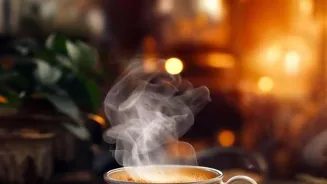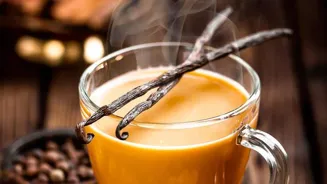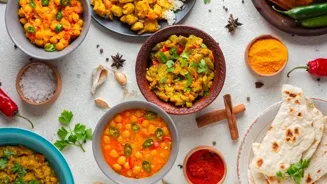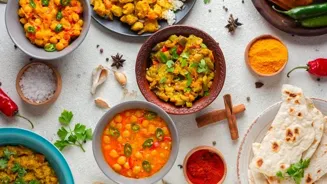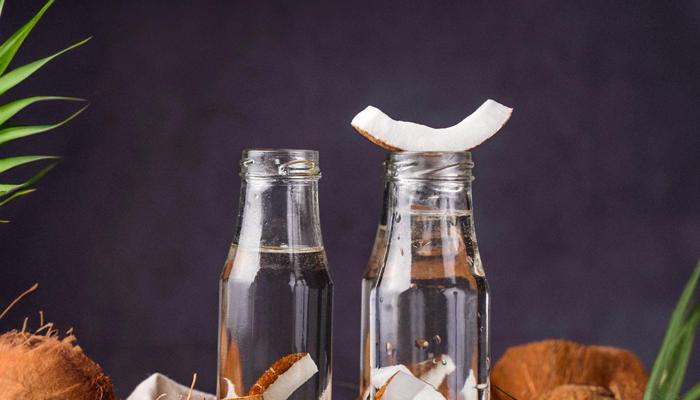Unlock the secrets to brewing the perfect cup of chai! Dive into the art of crafting this beloved beverage. Read more for a flavorful journey
For millions across India, and indeed the world, chai isn't
just a beverage; it's an emotion, a ritual, a warm hug in a cup. From the bustling streets of Mumbai to the serene hills of Darjeeling, chai is an integral part of our daily lives.
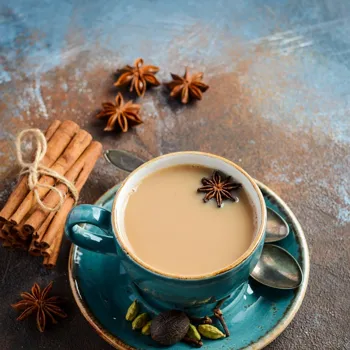
But achieving that perfect brew, the one that awakens your senses and leaves you craving more, can sometimes seem like an elusive art. Fear not, chai lovers!
We're here to spill the beans (or rather, the tea leaves) and unveil eight secrets to crafting the ultimate cup of chai, the kind that will have your neighbours lining up at your doorstep.
Choose tea leaves wisely for the perfect chai experience; it's the foundation
The foundation of any great chai is, undoubtedly, the tea leaves themselves. Don't just grab the first packet you see at the kirana store. Think about your palate. Do you prefer a strong, robust flavour, or something more delicate and floral?
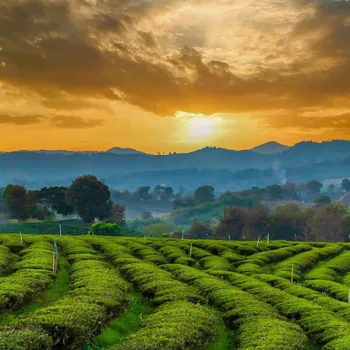
For a bold and invigorating chai, Assam tea is your best bet. Known for its malty flavour and briskness, it stands up beautifully to the addition of milk and spices. If you're after a more refined experience, Darjeeling tea offers a lighter, more nuanced flavour profile with subtle floral notes.
You can also experiment with Nilgiri tea, which offers a fragrant and smooth cup. Loose leaf tea is generally considered superior to tea bags, as it allows for better flavour extraction. However, if you're short on time, opt for high-quality tea bags with whole leaves.
Always check the expiry date and store your tea leaves in an airtight container away from direct sunlight and moisture to preserve their freshness. Choosing the right tea leaves is like laying the foundation for a magnificent building; it sets the stage for everything else that follows.
Fresh, filtered water crucial for brewing perfect chai
You might think that water is just water, but in the world of chai, it plays a crucial role. Always use fresh, filtered water for brewing. Stale or unfiltered water can impart unwanted flavours to your chai, masking the delicate nuances of the tea leaves and spices.
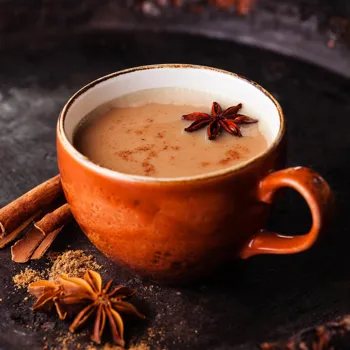
Avoid using water that has been previously boiled, as it loses oxygen and can result in a flat-tasting brew. The ideal water temperature for brewing chai is around 200-212°F (93-100°C), just below boiling point.
This temperature allows for optimal flavour extraction without scorching the tea leaves. Using excessively hot water can make the tea bitter. Now, for a truly authentic touch, consider using an earthen pot to boil your water.
Spices make chai unique; cardamom, ginger, cinnamon, cloves, peppercorns popular choices
Ah, the spices! This is where you can truly unleash your creativity and create a chai that is uniquely yours. While there's no one-size-fits-all recipe, some classic spices that work wonderfully in chai include cardamom, ginger, cinnamon, cloves, and black peppercorns.
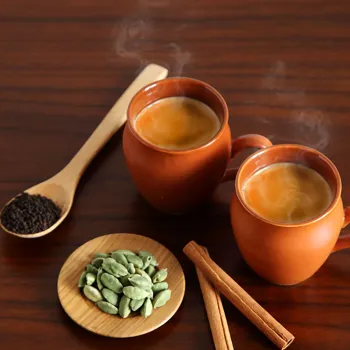
Cardamom adds a fragrant sweetness, ginger provides a warm and zesty kick, cinnamon lends a comforting warmth, cloves offer a hint of pungency, and black peppercorns add a subtle spicy bite. The key is to experiment with different combinations and quantities to find your perfect balance.
Some people also like to add fennel seeds for a touch of sweetness or star anise for a more complex flavour. Freshly ground spices are always preferable to pre-ground ones, as they retain more of their aroma and flavour.
Gently crush or bruise the spices before adding them to the water to release their essential oils.
Choose milk wisely for rich chai; experiment with various types but heat gently before adding
The choice of milk is another crucial factor in determining the flavour and texture of your chai. Full-fat milk will give you the creamiest, richest chai, while skim milk will result in a lighter brew. Buffalo milk, commonly used in India, offers a particularly rich and creamy texture.
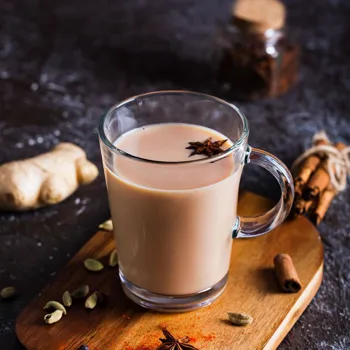
You can also experiment with plant-based milks like almond milk, soy milk, or oat milk. However, keep in mind that these milks have different flavour profiles and may not curdle properly when added to hot tea. The key is to heat the milk gently before adding it to the tea.
Avoid boiling the milk, as this can cause it to scald and develop an unpleasant flavour. The ideal ratio of milk to tea is a matter of personal preference, but a good starting point is 1:1.
Brewing chai: a delicate dance of heat, time, ingredients
Now that you have all the ingredients, it's time to brew your chai. Add the tea leaves and spices to the boiling water and let them simmer for 3-5 minutes, depending on the strength you desire. The longer you simmer, the stronger the tea will be.
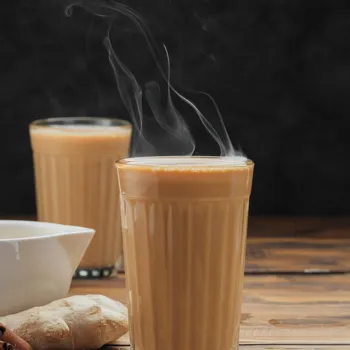
Keep a close eye on the pot to prevent it from boiling over. Once the tea has reached your desired strength, add the milk and bring it to a gentle simmer again. Stir occasionally to prevent the milk from sticking to the bottom of the pot.
Continue to simmer for another 2-3 minutes, allowing the flavours to meld together. The brewing process is a delicate dance between heat, time, and ingredients.
Personalize your chai sweetness with various sweeteners
The level of sweetness in your chai is entirely a matter of personal preference. Some people prefer their chai unsweetened, while others like a generous dollop of sugar. The type of sweetener you use can also affect the flavour of your chai.
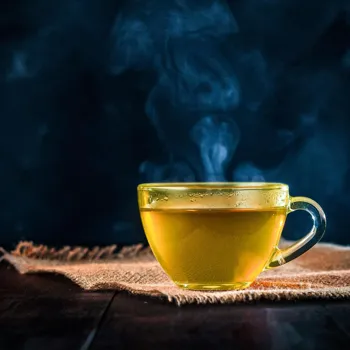
White sugar is the most common choice, but you can also experiment with brown sugar, jaggery, or honey. Jaggery, a traditional Indian sweetener made from sugarcane juice, adds a rich, molasses-like flavour to chai. Honey offers a floral sweetness and adds a touch of antioxidants.
Add the sweetener to your chai after you have added the milk, and stir until it is fully dissolved. Taste and adjust the sweetness to your liking.
Strain chai for smooth, clear cup; elevate taste
Once your chai is brewed to perfection, it's time to strain it. This step removes the tea leaves, spices, and any milk solids, resulting in a smooth and clear cup of chai. Use a fine-mesh strainer or a muslin cloth to strain the chai into your serving cups.

This will ensure that you don't end up with any unwanted residue in your drink. Straining is the final touch that elevates your chai from good to great. It’s the difference between a rough sketch and a finished masterpiece.
Serve chai in traditional kulhads for authentic experience
Finally, it's time to serve your chai. Use traditional clay cups (kulhads) for an authentic Indian experience, which imparts earthy aroma. Serve immediately and enjoy. Sit back, relax, and savour the moment. Close your eyes sip your chai with peace.
